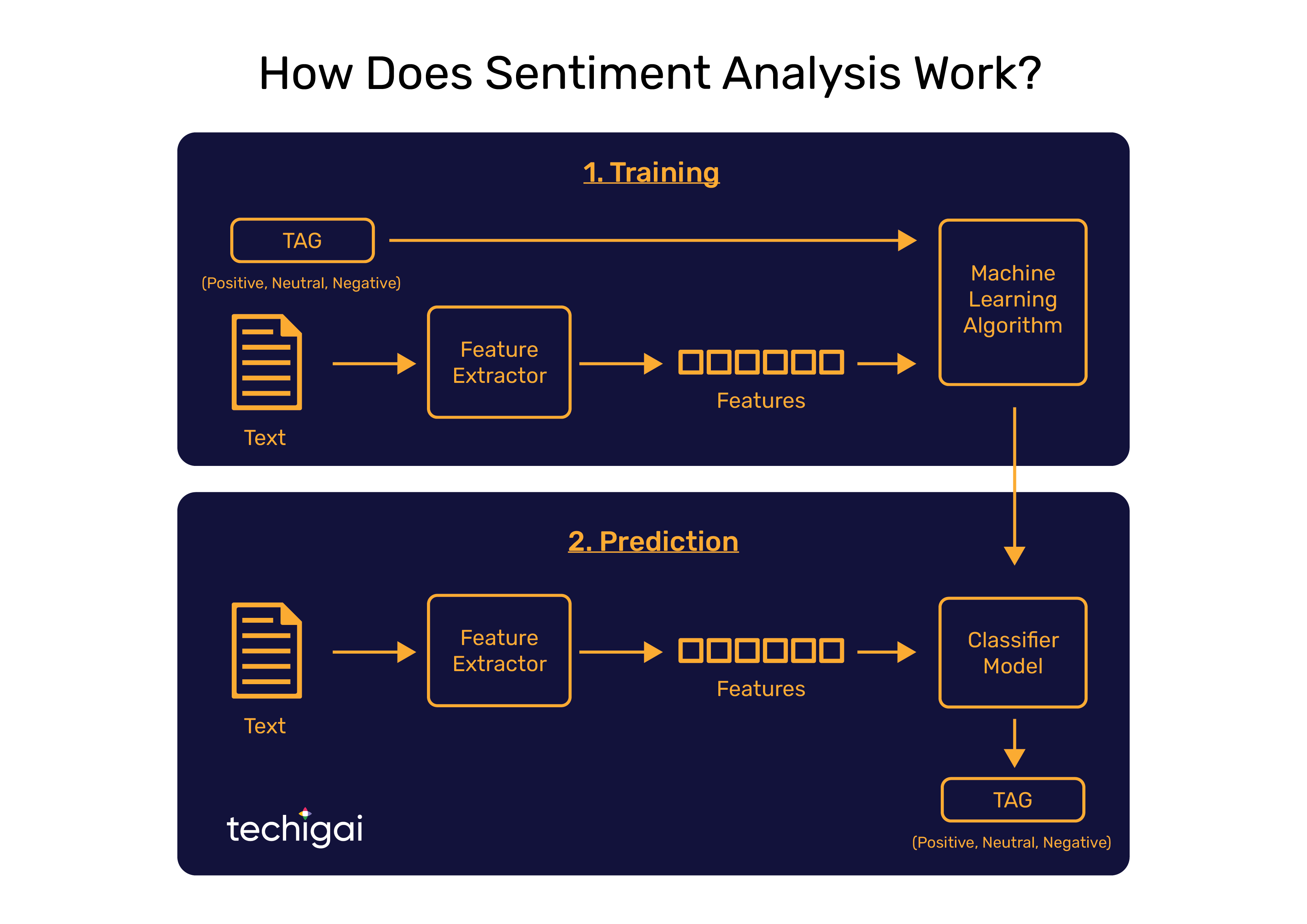4 Reasons Why Sentiment Analysis Is The Best Tool To Decode What Your Customers Are Saying About You

Imagine you are a healthcare company with a large number of social media followers who engage with your profile often. You receive over 10,000 Tweets every day, 300+ mentions on various websites, and 20,000+ reviews on e-commerce websites.
Processing all of this data to find a single collective opinion on how well your brand is perceived in the minds of customers will be a herculean task. Also, it would take too long for human resources to do it, and costs a pretty penny if you do get an army of human processors for the same. Even then, the output will still be prone to bias because of human’s subjective gathering of opinions.
What if you had at your disposal an unbiased, automated process that can seamlessly evaluate tons of textual data in a matter of minutes and categorize them to help you derive valuable insights. There is a term given to this process, which is Sentiment Analysis.
What is Sentiment Analysis?
Sentiment Analysis is the mining of data extracted from a source to identify and study it using NLP (Natural Language Processing).
This data can be either a single sentence or a set of paragraphs that your customers write about your products/services on social media, forums, websites,surveys or any other digital platforms.
These communications can be analyzed to determine the tone of the text and gauge the emotion behind it. This sentiment analysis can also be performed on Big Data (large volumes of data extracted in a structured, unstructured, or semi-structured form) from multiple sources.
Hence, Sentiment Analysis finds countless applications in many industries. It can be used to:
- Monitor the customer’s voice.
- Find the overall sentiment and product analytics for a brand/company.
- Conduct behavioral analysis of the brand/company in the market.
- Understand customers and market segments.
- Create or improve the marketing strategy to get the best out of it.
Today, sentiment analysis processes can be empowered to be faster and more accurate than traditional processes using by combining it with powerful AI and deep learning algorithms.
How Does Sentiment Analysis WOrk?
It uses the power of NLP (Natural Language Processing) and Machine Learning algorithms.
- Rule-based: Uses human-decided rules (NLP) to create tokens to parts of speech. If in a text, the positive tokens are more than negative ones, it is termed a “positive” sentiment
- Automatic: This method doesn’t depend on human-created rules but on machine learning techniques. Here, the text is taken as a classifier and the result is positive, negative or neutral.
- Hybrid: It uses both human-created and machine learning methods to generate an emotion behind the text. The results of this approach are more precise.

Types of Sentiment Analysis
Human emotions are complex. To decode the range of emotions, there are 4 types of sentiment analysis models that businesses can use.
- FINE-GRAINED: As the name suggests, you get a very fine analysis on the emotion behind a text. It categorizes a piece of text into – positive, negative, very negative, very positive, and neutral. This model is mainly used for the study of customer reviews or ratings.
- ASPECT-BASED: This model goes deeper in terms of analysis and determines even the indirect meaning from a particular comment.
For instance, if you own a mobile company, and you get a comment on one of your phones saying, “I have been struggling with the camera in artificial lighting areas.” The model scans through this comment to determine that it is a ‘negative’ emotion. - EMOTION DETECTION: Intense human emotions like anger, sadness, frustration, and panic are difficult to evaluate for a machine. So, brands use this emotion detection algorithm, which is based on machine learning algorithms. While the basic emotion detection systems use lexicons – a group of words that convey emotions; we suggest you go for advanced ML algorithms for a reason.
For example, you receive a comment saying, “this product is killing me,” and another comment saying, “this is a killer product.” Lexicons identify the word killer to be negative in every situation, which can bring a bad reputation to your brand. But, ML algorithms are advanced and are similar to the way a human decodes a message. So, they are trustworthy. - INTENT DETECTION: Many times, you often chase the wrong customers, who are not even ready to invest in your products or services. If you incorporate intent analysis in your business model, you will end up saving a lot of time, effort, and money going after wrong prospects.
Key Benefits of Sentiment Analysis for Any Business
1. Easy Understanding of Audience
Marketers need to understand how your audience feels about your brand, your social posts, and your campaigns, not just how much they mention you. A consistent Sentiment Analysis on the brand mentions can help marketers figure out what your audience needs from your brand and when.
2. Improved Customer Service and Brand Reputation
3. Brand Messaging and Product Development
By analyzing the sentiments, you can learn more about the needs of your audience. This can aid in giving insights that can impact your overall brand strategy and product development. In addition, it can help you understand how moves you’ve made offline are resonating in the social sphere.
4. Identifying brand crisis in the early stages
Sentiment Analysis Applications in Your Business
Your brand is alive as long as it generates responses from customers- be it in any form. To keep the engagement ongoing, the brand has a constant challenge to trigger their emotions.
1.Social Media Monitoring
Social platforms are home to reviews. Social networking has encouraged people to be open, honest, direct, and sometimes even critical about everything, even brands products. It would not be intelligent to ignore the social media buzz. Sentiment Analysis helps in quantifying the nature of responses.

2.Customer Care
Customer care, call center, chatbot, mail support, and other tools are needed to win the trust and loyalty of your customers and boost your credibility. Here’s how sentiment analysis can be used:
- Analyze customers’ interactions
- Prioritize customers with complaints
- Develop a system to redirect tickets to your team
- Create segments with your audience for insights.
3.Voice of Consumer (VoC)
VoC involves feedback tracking, data analysis, and action planning. The role of it is to understand how people perceive and interact with your brand and products. Negative customer emotions can have major effects on sales. However, negative comments can be for you. Take any angry mention as critical customer feedback, and there is a high probability that the comment can be a guide to improve your product.
4.Product Analysis
Sentiment analysis helps in product research by reviewing all product mentions, looking at feedback and social media posts, keeping an eye on people who like and dislike your product, in particular, and providing all relevant details to your product development team to make clients happy.
Top Industries that are already taking advantage of Sentiment Analysis
![]()
Hospitality
Financial Services
Retail
Pr & Advertising
Conclusion
To say that Sentiment Analysis is a recommended tool for any company that has its customers on the internet will be an understatement.
Whether it’s calling out a brand on social media for an undesirable experience or expressing delight after making a purchase (and why) – every interaction your customers makes with your brand is an opportunity for you to learn how they feel about your business.
With the use of customer sentiment analysis, firms can get the most out of data like product reviews, social media posts, surveys, etc., and make use of those insights to and design strategies to deliver greater value to them in the future.
Thanks to artificial intelligence (AI) and machine learning, sentiment analysis algorithms can learn to quickly classify consumer thoughts on their own, saving you a lot of time and work in the process.
At Techigai, here’s how we leverage natural language processing to help you determine the sentiment in customer responses. If you find it beneficial for your business, let’s talk!
“
There’s no shortage of remarkable ideas, what’s missing is the will to execute them
Seth Godin




